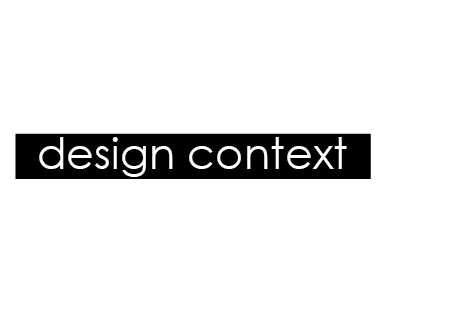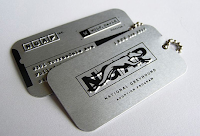Task: Using examples of design for branding and identity, packaging and promotion, information and wayfinding and publishing and editorial explore the following colour systems:
- CMYK (process)
- Spot colour (2 or more)
- Monochrome and tints (solid colour and half tones)
-------------
Branding and Identity:
This is a piece of brand identity that I found on the Behance website. The design uses monchrome colours for print. The logo itself has a slight tint in the centre, its subtlety just gives it a sparkle which makes it so much more interesting than one colour.
This is part of a series of photographic prints for a spa. The use of monochrome adds sophistication and compliments the brands identity and personalitity. The image used is very surrene and the colour process enhances this.
The above image is self promotion print for a Magician, he has used photographs within his branding which would use a CMYK colour process for printing. There are a few things that he has printed onto such as key rings, posters and cd's, these would each use a different printing process. I think that using CMYK with this particular branding works really well because his photos are very mystifying and it would not have the same attraction in my opinion, if it were monochrome for example. Monochrome is a colour process which I think works well to add sophistication to a brand as it helps to keep things simple.
I really love this front cover of the Arts Project magazine (which is an actually an issue about print!). They have used pieces of print that use various colour processes to create the word PRINT for the front cover. The magazine itself is then printed using a CMYK colour process because the image has been made of using print that uses CMYK (if that makes sense).
These business cards use spot colouring as their colour process, the flash of colour shoots through the company name. This draws your eyes in, the colouring uses a slight gradient which softens the colouring but keeps it bold enough to stand out.
This is a really creative way of designing a business card, rather than a standard bit of card. This opens up to reveal the information on the inside. They use two colours for this design which I think is spot colouring, they also reverse out the colours on the inside to outside. I think if they had kept the colouring on the inside the same as the outside, it would have been less legible, but because the blue is a light shade the brown stands out. On the front the blue works really well as the text colour, it keeps it very delicate and sophisticated and its not too 'in your face'.
--------------
Information and Wayfinding
I found this image of a Pantone calendar on the Behance website. They have used the CMYK colour process as the image used in the centre is made up of coloured photographs. Pantone colours are actually solid spot colours so its quite funny how they have had to use CMYK for printing their calender.
The Argos catalogue is full of information and is printed in CMYK, they use thousands of coloured images within their catalogues. Also becasue they are printed in such large quantities they are probably printed using a cheap and quick process.
These printed information pieces use black monotone, using monotones and duotones adds sophistication to a piece of print. Although this may just be my personal opinion, black and white is just nice and simple but if done in the right way it looks so good.
This piece of print uses a pop up style design, it is a monochrome design as it only uses the grey type within it. The white is obviously the colour of the stock. Designs like this are very cheap to print as monochrome is one colour using tints and tones.
This design uses spot colouring, spot colouring is when the colours used arent made from the CMYK colour process. The spot colours in this design have been used as colour coding for a key.
These designs look as though they have used spot colouring, it would be hard to tell exactly without using a linen tester. They have used 4 colours plus stock, some of these have been flooded as you obviously cannot print white. There is a nice visual consistency between all of the designs, they had probably created a specific swatch library with the four colours they have used so that they have an exact visual consistency.
-----------------
Publishing and Editorial
This design has used monotone and duotone. The duotone image is the yellow part, they have combined yellow and black tonal values. I think it works well by using both rather than one or the other, just more visually interesting.
This design just uses a blue monotone. The blue they have used is the same as their logo so there is a visual consistency. Sometimes it can be hard to tell if they have used black too because one colour does have a lot of tints.
This design has used the CMYK colour process. This is probably the case because the magazine has used a full cover photograph.
This publication has also used the four colour process, they have used colour overlaying to make other colours, which lowers print costings. If this design were to use just spot colours, the printing costs would be expensive. Overlaying and using tints of one colour can keep costs down without restricting colour usage within a design.
This design uses the monochrome process, using tints of black to create the image. Monochrome doesnt just use black, it can be any single one colour and its tints, as long as the design only uses one colour. You have to be careful when using monochrome in design as it can either make or break a piece of design, but I guess thats with any colouring.
This design also uses monochrome, using just black and its tints. This design uses it slightly differently to the one above, the black has been kept as a solid colour and has been used to fill in shapes which make them dominant against the rest of the design. Again using just black would keep printing costs down. With this design using it so creatively too means that its cheap and effective, every designers dream.
-----------------
Packaging and Promotion
These designs use two specific colours. They would both be spot colours that are specific to the brand. Many companies/ brands do this with their logo so that no matter where they send work to be printed their logo will be consistent in colour throughout their branding/ range and merchandise.
This packaging uses to spot colours, the blue and the greyish/ black. The illustration uses tints of the solid spot colour to allow some variation. It works well with the blue because it stands out from the dark grey.
These packaging designs use just black within their packaging designs. The range of make up is for Topshop which is a very popular high street fashion brand. I think that they have chosen to keep their packaging simple because their clothing can be very flamboyant. The design definetly reflects on their branding.
This is a CD case for a music album, they have used monochrome, they have distorted a photograph with shapes. The colour they have used looks like a dark brown. Using the brown works well with the style of the design as its not as harsh as black.
This wine bottle packaging uses the CMYK four colour process. The colours are very washed out and toned down, this works well with the image that has been used. It is very surrene and subtle like nature. Colours set a tone and atmosphere, if this same image was created using very bright colours it wouldnt give the same tone of voice and it could even possibly change the target audience.
This 'scratch card' style design also uses the CMYK colour process. I can tell this because there has been a large number of different colours used. I think its really cool how the design used the thin layer of latex, therefore the top must be scratched off to see the underlying colours.

































































